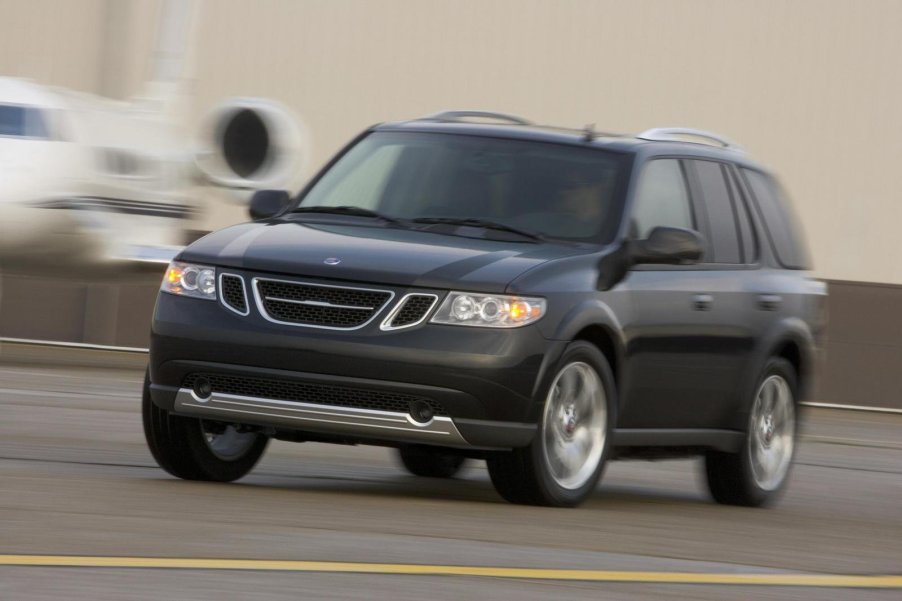
The “Sweedest” Sleeper SUV You’ve Never Heard Of
It’s true—every car enthusiast has a favorite sleeper car or sleeper SUV. The arrest-me-red Chevrolet Camaros and grabber blue Ford Mustangs may bring in the hardware at car shows, but their reputation certainly precedes them.
They’re not particularly rare, unique, or unsuspecting. Their aggressive styling oozes the aura of speed and performance. Everybody knows these pony cars mean business, probably even your Grandma.
The “SS” logo and “GT” badge offer not so subtle cues that whenever the stoplight turns green, odds are you’re going to be left in their dust.
Or at least that’s how it’s supposed to go. Though it goes without saying, not all car enthusiasts are created equally. Some prefer the flashy sports cars with vibrant paint jobs and loud exhaust systems. Intentional or not, such cars are likely to turn heads and be the envy of their family, friends, and coworkers.
And then, we have a much smaller group of enthusiasts who aren’t enamored by the hype. They prefer to prey on sports cars in unsuspecting vehicles that are best described as a wolf in sheep’s clothing.
We’re not talking about CTS-Vs, Jeep Trackhawks, or Charger Hellcats that we’ve seen multiple “YouTubers” pawn off as sleepers. These models are highly recognizable, are well-represented at car meets, and have served as the halo performance offerings from each of their respective manufacturers. Get real.
I’m talking about real sleepers—the obscure, mythical unicorns that even the most car-crazed individuals don’t recognize. It doesn’t happen often, but sometimes manufacturers gift these enthusiasts a golden nugget.
Saab Made a Sleeper SUV?
Let’s take our time machine back more than a decade to 2008. Back to General Motors’ headquarters, before the bailout, when the Swedish automaker Saab still remained under its corporate umbrella.
Perhaps it was a slow night at the Saab production facility. Maybe Mary Jane played a role in the design team’s final meeting. Who are we to judge? Regardless, somehow, the infamous 6.0-liter LS2 engine shared with the Pontiac GTO and Chevrolet Corvette made its way into the lowly Saab 9-7X. With that, Saab’s sleeper SUV was born.
The new model, called the 9-7X Aero, was built on the GMT 360 platform shared with corporate siblings like the Chevrolet Trailblazer, GMC Envoy, Oldsmobile Bravada, and Buick Ranier.
With the exception of the highly publicized and revered Trailblazer SS, the 9-7X Aero was the only other model to receive the LS2 powerplant. With 390-horsepower and 395 pound-feet of torque, the 9-7X could accelerate to 60 mph in 5.5 seconds—no small feat for an SUV of this size.
Drivetrain and Suspension
In addition to its raucous small-block V8, the Aero has a few more tricks up its sleeve. While all 9-7Xs were equipped with standard with all-wheel drive, the Aero features a heavy-duty rear axle with a limited-slip differential and an automatic center Torsen differential that distributes torque between the front and rear wheels.
The Aero also features a lowered chassis, 10 percent larger anti-sway bars, and upgraded 12.8-inch rotors with dual-piston calipers to give the driver a better sense of control from behind the wheel. Exclusive 20-inch polished aluminum six-spoke wheels and V-rated performance tires helped reduce sidewall flex and improve traction during high-speed cornering and hard launches. But like a true sleeper SUV, you’d never know.
Only an estimated 500 Aeros were sold, and the 9-7X was discontinued after the 2009 model year. All were finished in Carbon Flash Metallic paint that allows the Aero to blend in seamlessly with the other neutral tone daily commuters on the road.
Compared to the more boldly styled Trailblazer SS, the Saab’s European-inspired persona was far more subdued and sophisticated. Nobody would ever guess what lurked beneath the Swedish SUV’s bonnet, making the 9-7X Aero the perfect sleeper even the most knowledgeable car enthusiasts would never see coming.


